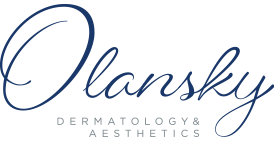When the skin is injured, cells attempt to repair it by forming a scar. For most people, this does not pose a problem or significant cosmetic concern. However, for those that form keloid scars, the scar tissue continues to develop after the wound heals. This excessive scar tissue causes a red, raised appearance that often requires a dermatologist to remedy.
Besides the aesthetic concern, keloids can feel itchy or sensitive to the touch. Keloids develop after the skin is cut, burned or pierced. They are more commonly found on the chest, shoulders, earlobes and cheeks. Keloids can develop after an accidental injury or following surgery. It may take a few months or longer until you notice that a keloid is forming on the wound site.
If you fall within the following categories, you are more likely to develop keloids:
- African American, Latino or Asian (darker skin increases chances 15% to 20%)
- Younger than 30 years of age
- Pregnant
- Teenager going through puberty
- History of keloids in your family
In addition, studies also suggest that people with type A blood are linked to higher rates of keloid development, as are those with a dysfunctional thyroid gland and people who take certain systemic drugs such as anabolic steroids.
If you do have keloid scarring, there are effective treatments available. Trusting a board certified dermatologist who specializes in the skin and its tissues is by far your best choice. Olansky Dermatology Associates offers keloid scar treatment using topical creams, steroid injections or surgical removal depending on your specific needs. Corticosteroid injections are considered the best and safest way to reducing most keloid scars. The injection works by softening the scar, making the appearance more appealing and helping to prevent future keloids. Keloid scars have a high rate of recurrence so make sure you choose a skin expert for proper treatment.

